Latest news

OMRON’s Mobile Robots Win the METI Minister’s Award at the 10th Robot Awards Program
10 november 2022 OMRON LD Series and HD Series mobile robots have won the prominent Ministry of Economy, Trade and Industry (METI) Minister’s Award at the 10th Robot Awards program, which is chiefly co-organized by METI and the Japan Machinery Federation.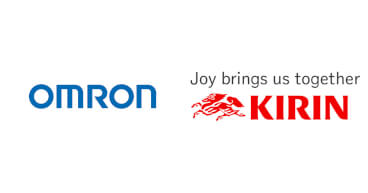
OMRON Invests in Kirin Techno-System, a Comprehensive Manufacturer of Inspection Machines
19 oktober 2022 To supply safe and secure beverages and to further accelerate global environmental conservation.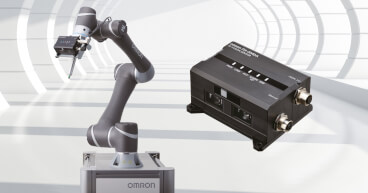
OMRON Releases New FH-SMD Series 3D Vision Sensor for Robot Arms
12 oktober 2022 Vision sensor enables human-like detection and flexibility for automating part picking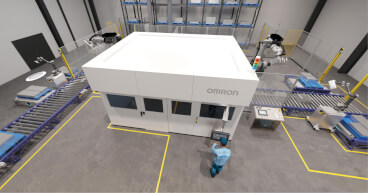
OMRON Launches Safety Virtual Experience: A guide to safe automation in flexible manufacturing
5 oktober 2022 The new Safety Virtual Experience from OMRON provides a 360-degree view of safety solutions for factory floors in automotive and intralogistics applications.
Omron meddelar om prisjustering från den 1 januari 2023
27 september 2022 Trots Europas återhämtning från pandemin är ekonomin och affärsklimatet fortfarande mycket utmanande. De globala leveranskedjorna är fortfarande under betydande påfrestningar och kriget mellan Ryssland och Ukraina innebär utmaningar utan motstycke.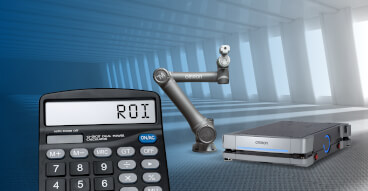
OMRON launches ROI calculator for mobile and collaborative robots
1 september 2022 A new ROI calculator from OMRON has been launched to support the process of evaluating an investment in collaborative and mobile robots, including easy and affordable leasing opportunities that are ideal for small and medium enterprises (SMEs).
OMRON introduces OMRON TM16 collaborative robot with a payload of 16kg
10 augusti 2022 The OMRON TM16 cobot adds more power and versatility to OMRON’s strong collaborative robot lineup.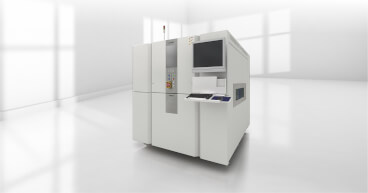
Increased precision: Robert Bosch GmbH chooses new OMRON inline 3D CT X-ray inspection system VT-X750
4 augusti 2022 Printed circuit boards (PCBs) are central component of numerous electrical devices, and the automotive industry is also increasingly dependent on PCBs that do not have any weak points.
OMRON Acquires Science Based Targets Initiative Certification
19 juli 2022 Based on the greenhouse gas (GHG) emissions reduction targets set in its long-term vision, Shaping the Future 2030 (SF2030), OMRON paves the way for achieving the goal of limiting global warming to 1.5 degrees Celsius advocated by the Paris Agreement.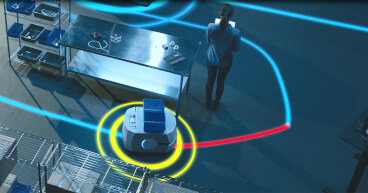
OMRON Adds Selectable Autonomy and FLOW iQ to FLOW Core Fleet Management Software
11 juli 2022 Driving flexible manufacturing with mobile robots in complex material transport applications
Multiple vulnerabilities in Machine Automation Controller NJ/NX series
1 juli 2022 Information on the vulnerabilities that exist in the NJ/NX series.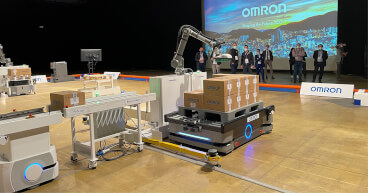
OMRON’s Flexible Manufacturing Roadshow travels across Europe
8 juni 2022 Our Flexible Manufacturing Roadshow has embarked on a unique journey across Europe, featuring exclusive demonstrations of human-machine collaborative solutions not usually seen outside of a factory setting due to their size and scale.
Omron TM12 cobot automates booklet feeding for Kraus Maschinenbau
28 juli 2020 Cobots streamline processes in medtech and packaging industry
-

Introducing OMRON HD-1500 Mobile Robot
Introducing OMRON’s strongest mobile robot: the HD-1500. The HD-1500 is an advanced autonomous mobile robot specifically designed to transport heavy payloads up to 1500 kilograms. The HD-1500 also represents innovations in mobile robotics. Its new architecture features lasers that provide 360-degree safety coverage, as well as an onboard programmable logic controller, or PLC, to easily interface with custom attachments. Heavier payloads, built-in controller, improved sensors, route planning and object avoidance, the OMRON HD-1500 autonomous mobile robot offers the most advanced performance and safety. Learn more:
03:00
New HD-1500 mobile robot with 1500kg payload capacity
22 juli 2020 Industry-leading HD-1500 expands the possibilities for autonomous material transport
Reliable detection for iron and aluminum with new E2EW Series metal face proximity sensors
1 juli 2020 We have announced the release of the E2EW Series metal face proximity sensors that are designed to minimize downtime thanks to their durable construction and exceptionally long sensing range.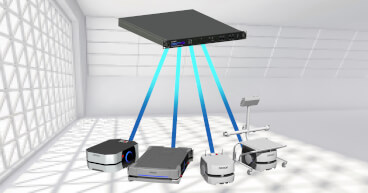
OMRON Fleet Simulator offers the industry’s first mobile robot simulator for factory and manufacturing applications
27 maj 2020 Omron offers a new solution for optimizing an entire fleet before deploying.
-

New MicroHAWK V/F400 and V/F300 Series Smart Cameras
Omron Industrial Automation recently launched the new V/F400 and V/F300 Series Smart Cameras, the latest additions to its popular MicroHAWK line. A new solution available for manufacturers who are concerned that their product inspections are becoming too complex. The powerful yet compact MicroHAWK V/F400 and V/F300 Series Smart Cameras simplify applications by combining code reading and vision inspection into a single, highly compact device. By bundling multiple capabilities in one, the V/F400 and V/F300 Series lower hardware costs and minimize the work required for commissioning and maintenance.
01:09
New MicroHAWK V- and F-Series Smart Cameras simplify code reading and inspection with ultra-small footprints
20 april 2020 The V/F400 and V/F300 Series Smart Cameras are the latest additions to OMRON’s popular MicroHAWK line that offers both code reading and vision inspection capabilities.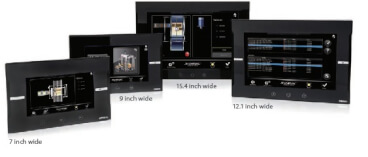
Omron’s NA Series offer new models and functionalities
20 april 2020 The new NA Series are the next generation of Machine Interface, a range of options and models that covers every need.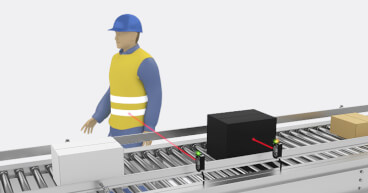
E3AS Series offers entirely new ways to use reflective photoelectric sensors
23 december 2019 The new E3AS sensors provide the longest sensing distance of 1,500 mm in their class, with the smallest body and the industry's first antifouling coating for revolutionary ease-of-use.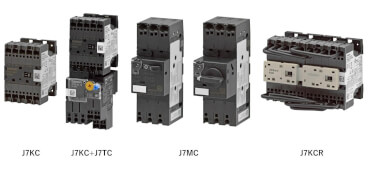
New low voltage switching gear (LVSG), circuit protectors and sockets with Push-In Plus technology
12 december 2019 Ideal solutions for environments with strong vibrations, completing the largest Panel Solution lineup in the industry*.
-

Bigger, stronger, better: new LD-250 mobile robot from Omron moves payloads up to 250kg
The new LD-250 mobile robot from Omron can handle a payload of 250kg and is the strongest and newest addition to our LD series of mobile robots. Together with the Fleet Manager, which for the first time in the industry enables the control of multiple mobile robots with different payloads through one system, it will help realize a more flexible and optimized autonomous material transport system.
02:37
New LD-250 mobile robot to move payloads up to 250kg
15 november 2019 Industry first to control different types of mobile robots via one system.
Q2V Compact Drive – Driving Quality
29 oktober 2019 The Q2V combines easy operation with high-efficiency control for almost any AC motor type, reducing the need for maintenance while saving energy.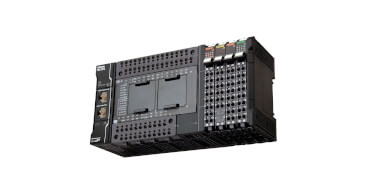
Complete renewal of the compact controller range
17 oktober 2019 Two new models released in the NX1P family of compact Sysmac Machine Controllers for maximum scalability and flexibility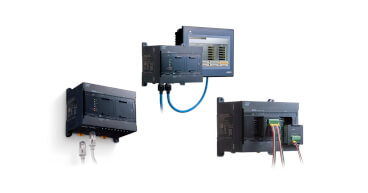
New CP2E Series all-in-one controller
17 oktober 2019 Programmable micro PLC is designed to support data collection and machine to machine communication. Extended temperature range increases reliability in special applications.
Virtual exhibition showcases the factory of the future
19 november 2020 We have launched a virtual exhibition allowing customers to experience the latest technologies that can be used to achieve industrial transformation.
OMRON awarded platinum rating from EcoVadis for sustainability
13 november 2020 OMRON has been awarded the EcoVadis Platinum rating (the highest distinction), a new category established this year to recognize companies that score in the top 1% of all the businesses assessed for sustainability performance.
VOLA’s innovative production line with mobile robots wins Danish automation award
11 november 2020 Automating 75% of transport to mitigate heavy burden and to shorten lead time from 42 days to 1 day
Omron Electronics meddelar prisjustering 2021
23 oktober 2020 Avisering gällande förändrade priser från 1: a januari 2021 Omron Electronics AB informerar härmed att vår nya prislista börjar gälla den 1’e januari 2021.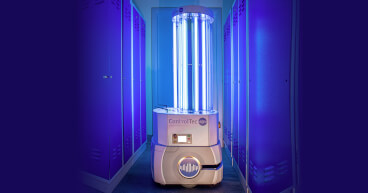
Disinfection solution with UV-equipped mobile robots
17 juni 2020 OMRON joins forces with partners to provide a new disinfection solution with UV-equipped mobile robots.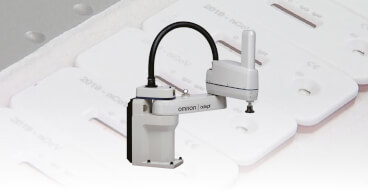
Robots speed up the production of Covid-19 tests
8 juni 2020 Medtech company Senova relies on OMRON’s smart robotics in the production of rapid antibody tests that show immunity within a few minutes
Technical Support
1 maj 2020 Many of our local offices are currently closed and staff are working remotely. Our support staff however continues working as normal from their homes. We would like to stress that we are very much still open for business and whilst response times in certain areas may be a little slower than normal we will endeavor to maintain the same high level of service you have come to expect from Omron, albeit provided in a different way.
Delivery information
1 maj 2020 We are committed to maintaining business continuity towards our customers, suppliers and partners to manage these challenging times and get through this global crisis.
A message from our CEO Seigo Kinugawa to customers and partners
28 april 2020 These are very challenging times as the world responds to the coronavirus outbreak. Like you, I am watching the rising numbers of infections with concern and have great admiration for all those who are in the front lines combating the effects of the virus, our hearts and thoughts go out to the people who have been affected by the unprecedented events we see unfolding around us.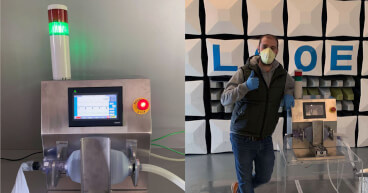
TheOpenVentilator: mass production of ventilators to start after successful clinical trials in Spain
22 april 2020 OMRON has contributed, with the non-profit association TheOpenVentilator, to the development of an emergency ventilator for compassionate-use, built with quality equipment and industrial reliability, to help patients requiring mechanical ventilation due to COVID-19.
Statement from OMRON on the coronavirus (COVID-19) outbreak
7 april 2020 We are closely following the development of the coronavirus outbreak in the EMEA region. While we adhere to the guidance from relevant authorities and the WHO, the safety and well-being of all our employees and relations is our highest priority.
Omron information om Coronavirus i Sverige
18 mars 2020 Omron Sverige tar viruset på största allvar och har nu sin personal arbetande hemifrån. Alla anställda i Omron Sverige arbetar fortfarande och står till förfogande via sina hemmakontor.eNews explained
Subscribe to Omron’s eNews today and you will receive the latest copy of our email newsletter, eNews.
Learn more